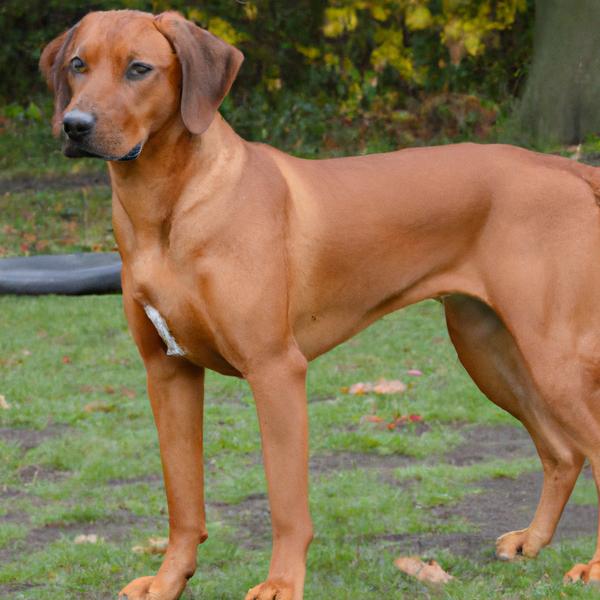Shethund vs. Malteagle: Breed Differences and Similarities
Hypoallergenic
Are Shethunds or Malteagles hypoallergenic, or neither?
Unfortunately, neither Shethund nor Malteagle are hypoallergenic, which may not make them the best choice for dog lovers who suffer from pet allergies.
Temperament
What are the personalities of Shethund and Malteagle dogs?
Playful
Stubborn
Courageous
Intelligent
Friendly
Responsive
Affectionate
Devoted
Lively
Gentle
Clever
Active
Playful
Loving
Independent
Intelligent
Friendly
Responsive
Docile
Lively
Gentle
Tempered
Sweet
Easygoing
Shedding Level
Do Shethunds shed more than Malteagles, or which breed sheds more, Shethunds or Malteagles?
Shethund or Malteagle dogs are low shedders. The coat sheds an average amount and doesn't require much care.
Ancestry
What are the origins of Shethund and Malteagle breeds?
Shetland Sheepdog and Dachshund
Maltese and Beagle
Date of Birth
When were Shethund and Malteagle breeds first developed?
2000's
Unknown
Eye Color Possibilites
What are the eye colors of Shethund and Malteagle dogs?
Blue
Brown
Hazel
Brown
Nose Color Possibilites
What are the natural nose colors of Shethund and Malteagle?
Black
Black
Coat Color Possibilites
What are the natural colors of the coat for Shethund and Malteagle breeds?
Black
Brown
Cream
Sable
Blue
White
Black
Brown
Cream
White
Coat Length
What is the typical coat length for Shethund and Malteagle breeds?
Shethunds have medium-length coats.
Malteagles have coats that can be either short or medium in length.
Coat Density
What is the density of the coat of Shethund and Malteagle?
Coat Texture
What is the hair texture of Shethund and Malteagle?
Straight
Litter Size
What is the usual litter size for Shethund and Malteagle?
A Shethund can have a litter of 4-8 puppies on average. However, it's worth noting that the size of the litters can vary greatly. Factors that can influence litter size include the health of the mother, breeding history, and genetics.
A Malteagle can have a litter of 2-14 puppies on average. However, it's worth noting that the size of the litters can vary greatly. Factors that can influence litter size include the health of the mother, breeding history, and genetics.
Adaptability
Shethund and Malteagles are known for their adaptability and versatility. They are capable of adapting well to a wide range of lifestyle changes and living environments, making them great companions for families and individuals of all lifestyles.
Health Issues
Between Shethund and Malteagle, which breed is more prone to health problems?
Shethund and Malteagle breeds are generally considered to be healthy. However, like all breeds, they are susceptible to certain health issues and it is important to keep an eye out for them and address them with your veterinarian as needed.
Major Concerns
What are the major health concerns for Shethund and Malteagle breeds?
Intervertebral Disc Disease
Deafness
Dermatomyositis
Von Willebrand's Disease
Acanthosis Nigricans
Collie Eye Anomaly (CEA)
Patent Ductus Arteriosus (PDA)
Pulmonic Stenosis
Portosystemic Shunt
Cervical Vertebral Instability
Patent Ductus Arteriosis (PDA)
Minor Concerns
What minor health issues should be kept in mind when owning Shethund and Malteagle?
Demodicosis
Cataracts
Mono/Bilateral Cryptorchidism
Microphthalmia
Ehlers-Danlos Syndrome
Progressive Retinal Atrophy (PRA)
Canine Cushing’s Disease
Joint Dysplasia
Urolithiasis
Cataracts
Glaucoma
Mono/Bilateral Cryptorchidism
Hydrocephalus
Mitral Valve Disease
Occasional Tests
What occasional tests are recommended for Shethund and Malteagle breeds?
Brain Auditory Evoked Response (BAER)
Internal Imaging (x-ray, CT scan, MRI, etc.)
Blood And Urine Analysis
Ear Tests and Myringotomy Tests
Blood Sugar and Thyroid Tests
Yearly Physical Examination
Full Chemistry Panel Tests and Blood Count
Eye Examinations (both internal as well as external)
X-rays of various parts of the skeletal system
Dental and Oral Examinations
Echocardiography (ultrasound)
Skin Scraping
Dental Examination
Ear Examination
Skin Evaluation
Eye Examinations
Complete Blood Count
Myelogram
Brain Auditory Evoked Response (BAER)
Internal Imaging (x-ray, CT scan, MRI, etc.)
Echocardiogram Tests
Blood Chemistry
Complete Physical Examination
Chest X-rays
Skin Biopsy
Social Needs
Shethund vs Malteagle social needs comparison
Shethund has above average social needs and thrives with interaction with humans and other dogs.
Malteagle has very high social needs and requires regular mental and physical stimulation, a job or purpose, and companionship.
Sleeping Need
Which of the two sleeps the most/least: Shethund or Malteagle?
Shethund and Malteagle breeds are known to have moderate energy levels and normal sleep patterns, typically sleeping around 12-14 hours per day.
Mouthiness
Mouthiness Comparison: Shethund vs Malteagle?
Roaming urge
Shethund vs Labrador: Running away tendency?
Prey Drive
Shethund or Malteagle - which breed has a higher level of prey drive?
Past times
What are some enjoyable activities and ways to keep Shethund and Malteagle entertained?
Fetch, Walk, Play, Snuggle
Hike, Walk, Play, Snuggle
Activity Level
Which breed has higher energy, Shethunds or Malteagles?
Shethund and Malteagle are high-energy dogs that require a lot of mental and physical exercise. Without proper stimulation and attention, these breeds can become problematic. If you're considering these breeds, be prepared to invest time and effort in their exercise and training.
Tolerance of being left alone
Walks per Week
How many miles should Shethund or Malteagle walk each week?
Shethund and Malteagle generally need a minimum of 7 miles of walking per week, but it can be increased as long as they are comfortable with it.
Activity per Day
Do Shethunds or Malteagles require more exercise?
In general most Shethunds usually need at least 90 minutes of exercise daily. This can be spread across the day and include all sorts of high-energy activities, like walking, running and playing.
In general most Malteagles usually need at least 60 minutes of exercise daily. This can be spread across the day and include all sorts of high-energy activities, like walking, running and playing.
Grooming
Which breed is easier to maintain in terms of grooming, Shethunds or Malteagles?
Shethunds require significant grooming, including regular trims and professional grooming assistance to maintain their coat. They may also require frequent bathing to keep their coat and skin healthy.
The Malteagle has low grooming needs and is easy to maintain.
Brushing Frequency
What is the recommended brushing frequency for Shethund and Malteagle dogs?
Shethund should be brushed at least once a week. Of course you can give them more frequent brushes if you find that they are still shedding a lot
Ideally, Malteagle should be brushed at least 2 or 3 times a week (preferably daily) improve shedding.
Brushing Tools
What brushing tools are used for Shethunds and Malteagles?
Pin Brush
Slicker Brush
Deshedder
Nail Clipper
Pin Brush
Dematter
Comb
Nail Clipper
Cups
How much food should be given to Shethund or Malteagle in cups?
Shethund and Malteagle share the same recommended daily food intake of 1 cups, although the appropriate quantity may vary depending on the quality and nutritional content of their food.
Daily Cost
Which breed has a higher daily cost, Shethund or Malteagle?
Shethund and Malteagle have a similar average daily cost of around $1.10 - $1.40.
Monthly Cost
Which breed has a higher monthly cost, Shethund or Malteagle?
When it comes to monthly expenses, both Shethund and Malteagle have a similar average cost, ranging from $35 - $42. This results in an average yearly cost of around $420 - $504.
Sensitivity Level
How do Shethund and Malteagle compare in sensitivity?
This breed is sensitive to its environment and best suited for patient and understanding families with a consistent routine.
This breed is sensitive and requires gentle handling and a calm home environment.
Apartment Friendly
Which breed is more apartment-friendly: Shethund or Malteagle?
Shethunds are good apartment dogs as long as they get enough exercise and stimulation outside of the apartment.
The Malteagle is a great apartment dog, thriving with sufficient exercise and time outside as part of their daily routine.
Child Friendly
Do Shethunds or Malteagles have a friendlier temperament towards children?
Shethunds have an average level of friendliness towards children.
Malteagles make excellent family pets for kids due to their gentle, protective nature and calm temperament.
Senior-friendly
Which dog is more suitable as a pet for the elderly - Shethund or Malteagle?
Cat Friendly
Do Shethund or Malteagle breeds have a better compatibility with cats?
Shethunds and Malteagles are one of the best dogs for cats. They accept cats readily as part of the family. However, this dog breed should be trained to not chase after the kitty early on
Dog Friendly
Which breed is more sociable with other dogs: Shethund or Malteagle?
Shethunds are average in their friendliness towards other dogs, and socialization can help.
Malteagles are generally very friendly towards other dogs, with a happy and affectionate temperament.
Pet friendly
How do Shethund or Malteagle dogs interact with other pets?
Stranger Friendly
Which breed is more friendly with strangers: Shethund or Malteagle?
Shethunds are quick to announce strangers and can be standoffish or suspicious.
Malteagles are highly friendly around strangers.
Playfulness
Which breed is more playful between Shethund and Malteagle?
Shethunds have an average level of playfulness, enjoying playtime like most dogs but not excessively so.
Malteagles are a playful breed that needs daily playtime to be happy.
Trainability
How do the trainability levels of Shethunds and Malteagles compare?
Shethund and Malteagle dogs are known for their ease of training and ability to learn quickly, making them a popular choice for pet owners and trainers alike.
Compare Shethund with other breeds

Miniature Bulldog
Shethund vs Miniature Bulldog

English Bullweiler
Shethund vs English Bullweiler

Border Collie Pit
Shethund vs Border Collie Pit

Cocker Sheltie
Shethund vs Cocker Sheltie

Tosa
Shethund vs Tosa

Sealydale Terrier
Shethund vs Sealydale Terrier

Rhodesian Labrador
Shethund vs Rhodesian Labrador

Rashon
Shethund vs Rashon

Cairland Terrier
Shethund vs Cairland Terrier

Sammypoo
Shethund vs Sammypoo

Jackweiler
Shethund vs Jackweiler

Doberman Collie
Shethund vs Doberman Collie

